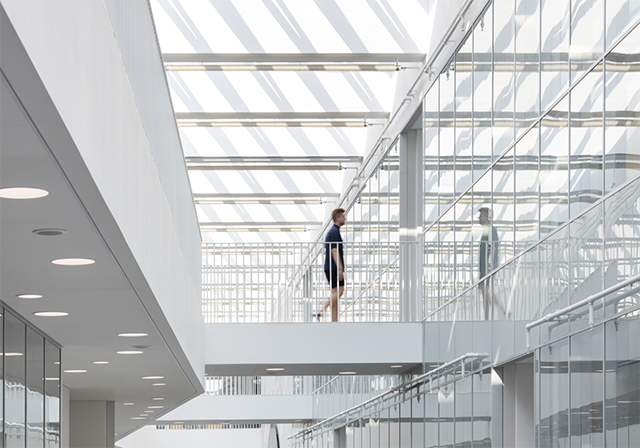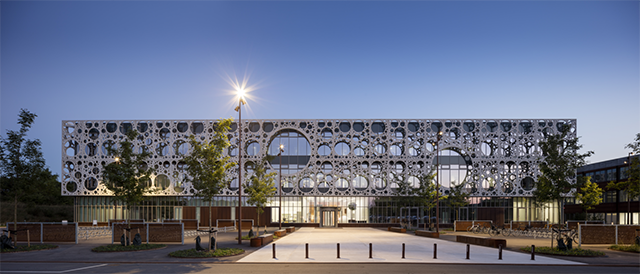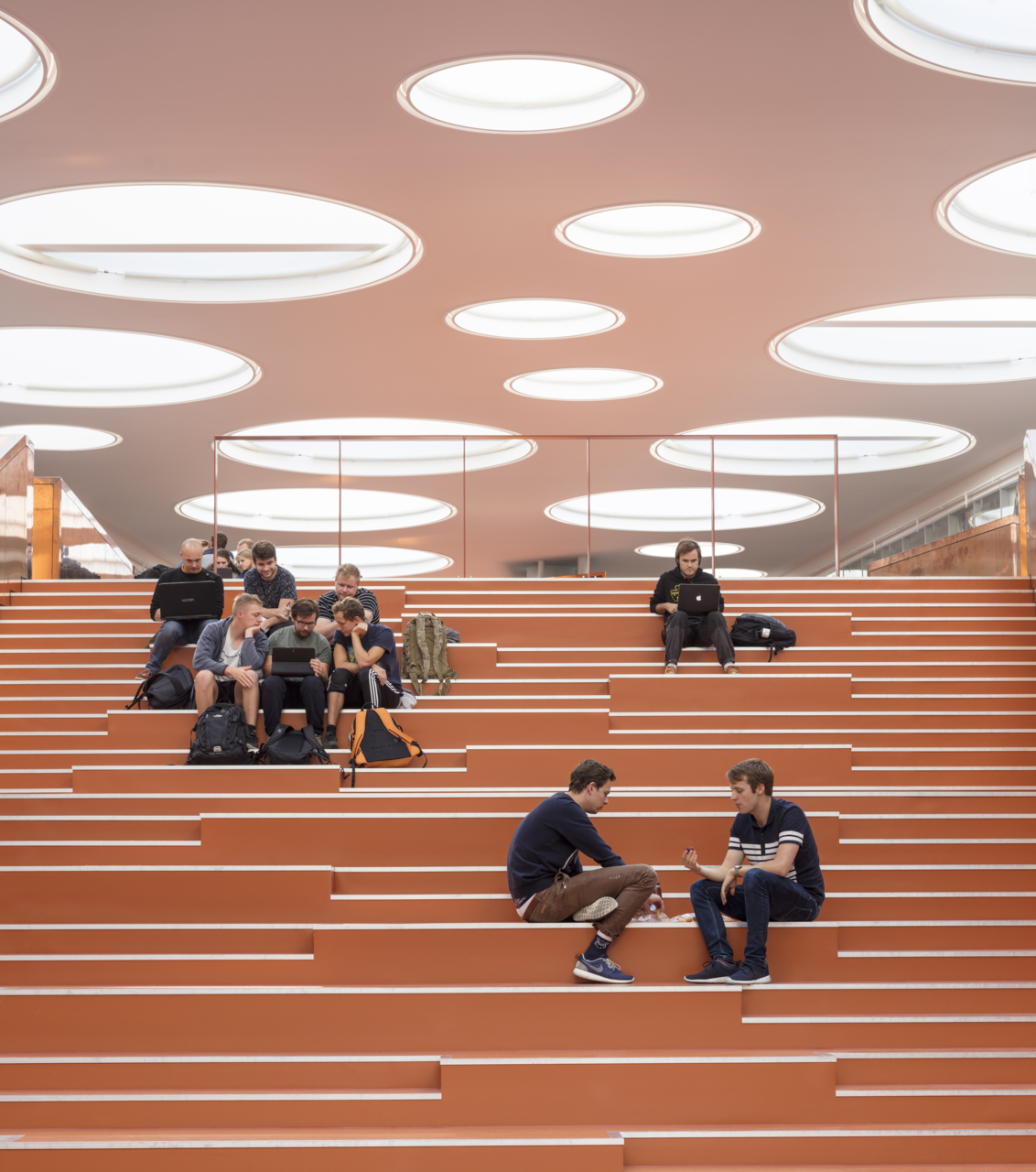
By Kathrine Westermann
Creating the buildings of tomorrow is an immense responsibility. Today, our schools, hospitals and living spaces must provide optimal conditions that support health and productivity. But how can architects meet increasing demands while delivering environments for high performing individuals and human health?
Evidence-based design, which implements modern research results on the wellbeing effects on humans, into the creation of space, is at the heart of Lone Wiggers’ architecture.
Having worked as an architect for 27 years and as partner in the architect firm C.F. Møller for 20 years, Lone Wiggers will share her office’s latest works at the 7th Daylight Symposium to show the possibilities of using daylight and other green measures as design drivers when creating new public buildings.
Designing for wellbeing
By utilizing modern research in the design of two crucial educational institutions in Denmark, the recently inaugurated Technical Faculty of Southern University in Odense and the Faculty of Health and Medical Science “Maersk Tower” at the University of Copenhagen, Wiggers is taking public architecture to a new, advanced and value-creating level. Both buildings are designed with human wellbeing as the point of gravitation.
“We have an obligation to look at ideal long term effects for the users, when creating tomorrow’s buildings, for instance looking at what elements in architecture improve learning in our schools and keeps us healthier in life,”
says Lone Wiggers
Scientific evidence – a valuable tool
Evidence-based design is gaining ground as the use of scientific evidence is turning into a powerful tool for designers and architects.
“If applied at large-scale, evidence-based architecture can unlock a huge untapped potential for societies in terms of increased productivity and reduced health costs,” says Wiggers.
Especially, as there is a clear correlation between bright classrooms and high student performance. A study in France by UPMC / INSERM (Epidemiology of Allergic and Respiratory Disease (EPAR) Department, IPLESP) involving 2,387 pupils across Europe found that students in classrooms with larger windows, a higher percentage of south facing windows and adequate daylight control performed better in mathematical and logic tests.
Gathering architects and researchers from around the world
Lone Wiggers will speak at the Daylight Symposium, where architects, researchers and experts from all over the world will gather for two days to launch and exchange knowledge, experiences and viewpoints within the field of architecture and daylight.
This year’s symposium topic is “Healthy & Climate-Friendly Architecture – from knowledge to practice”, focusing on the use of daylight, firstly to create buildings promoting human health and wellbeing, secondly to minimize the negative impact of man-made structures and activities on climate change.
Watch the 7th VELUX Daylight Symposium keynote presentations LIVE.
Other main speakers include:
Anne Lacaton (France), principals of the architecture firm Lacaton & Vassal, having found new ways to use standard construction systems to transform older buildings by bringing more light into the buildings.
Stefan Behnisch (Germany), Behnisch Architekten, an award-winning architect and advocate of sustainable design.
Omar Gandhi (Canada), one of The Architectural League of New York’s ’Emerging Voices’ of 2016.
To see the full list of speakers, please visit the Daylight Symposium Programme.





